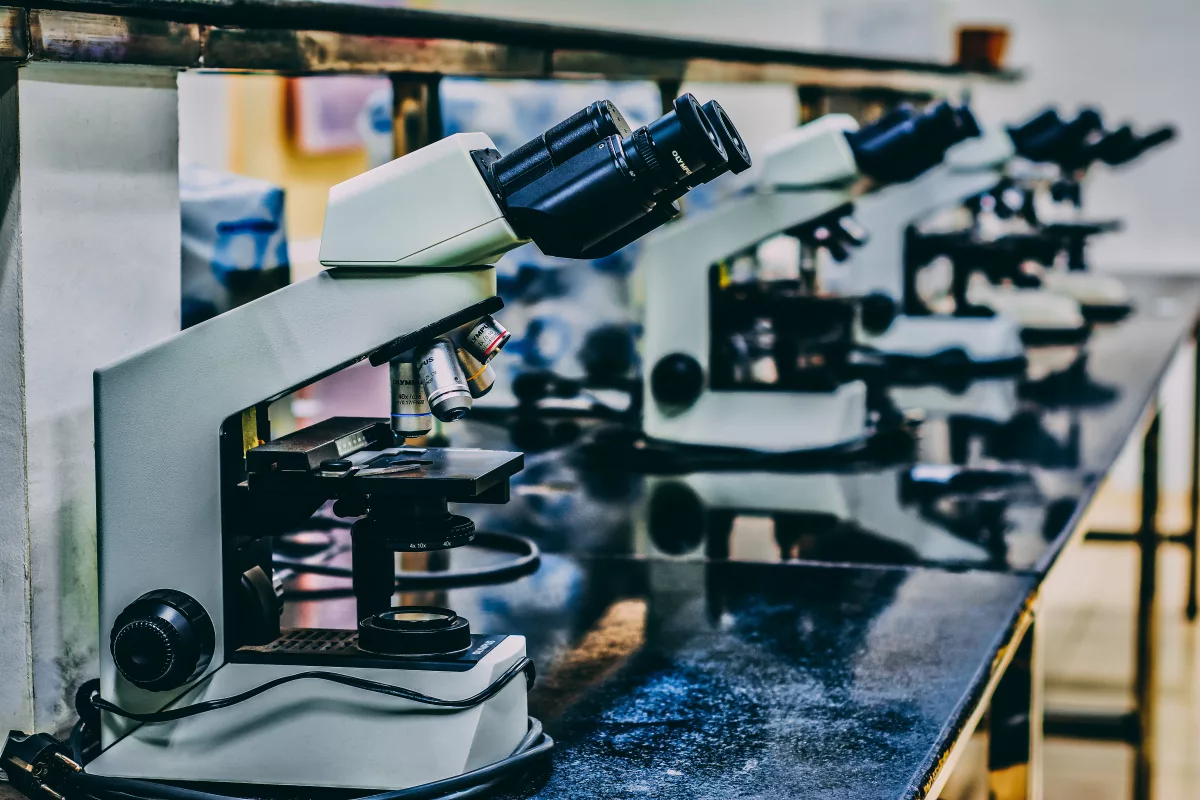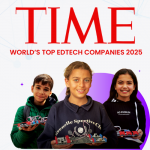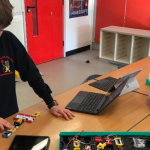In our world, education links countries and cultures, creating peace and understanding. Twin Science & Robotics is leading this effort. By combining STEAM (Science, Technology, Engineering, Arts, and Mathematics) with sustainability, Twin is getting a new generation ready to tackle global issues together. This post looks at Twin’s fresh way of learning that shapes young minds for a united future. Be part of an educational journey that’s as thrilling as it is meaningful.
Think of a classroom that has no borders, where learning about science and tech also means learning about being a citizen of the world and peace. Twin Science & Robotics sees STEAM education as the key to a future where we all live sustainably. Here, we explore how Twin is leading a worldwide movement, using science to bring students from all over together. Join an educational change that’s about gaining knowledge and making the world better.
Celebrating World Science Day for Peace and Development
Every year on November 10th, people around the world celebrate World Science Day for Peace and Development. This day is more than just a party; it reminds us of the big role science has in our lives and the need to talk about new science issues with everyone. It’s a day for countries to come together in science, to promise to use science to help society and to support scientists.
Science education is super important for sustainable development. It helps us solve big problems like climate change, harming the environment, and social unfairness. Science education isn’t just about learning facts; it’s about growing a way of thinking and acting that uses science to help everyone. It’s about making a culture of peace and growth through shared knowledge and new ideas.
Here are some important facts:
- UNESCO says that only 35% of STEM students in higher education around the world are women, showing a big gender gap we need to fix.
- The United Nations says STEM education is crucial for sustainable development and wants more investment in STEM education to solve global problems.
- The World Economic Forum says STEM skills are needed for future jobs, with 65% of children starting school today ending up in jobs that don’t exist yet.
In short, World Science Day for Peace and Development is a call to use science for the good of society and the world. It’s a time to think about how science education can lead to sustainable development and peace.

The Sustainable Development Goals (SDGs): A Blueprint for Action
The Sustainable Development Goals (SDGs) are a call to action to end poverty, save the planet, and make sure all people can live well. All United Nations Member States agreed on these 17 goals in 2015 as part of a big plan for 2030. These goals are about making sure we have a good balance of economic, social, and environmental health.
The SDGs are important because they give us a plan for a better world for everyone, now and in the future. They ask all countries to work together to make life better while taking care of the planet. They say that to stop poverty, we also need to grow our economies and take care of social needs like education, health, and jobs, and at the same time, fight climate change and protect the environment.
The goals cover a lot, like poverty, hunger, health, education, gender equality, clean water, and affordable energy. To reach these goals, governments, businesses, societies, and people need to work together. We can track progress with 232 indicators, which show us how well we’re doing and where we need to do more.
In the end, the SDGs are a strong promise to finish what we’ve started and to make sure no one is left out. They are an urgent call for all countries to work together. They show that stopping poverty and other problems must happen alongside making health and education better, reducing inequality, and growing the economy – all while dealing with climate change and protecting our oceans and forests.

Integrating Global Unity in STEAM Education
In today’s education, STEAM is more than just a subject; it’s a new way for the world to talk. Twin Science & Robotics is leading this change, mixing science, tech, engineering, arts, and math into a language that goes beyond borders. This is key because problems like climate change and inequality don’t stop at borders—they are worldwide issues that need us all to respond together.
For teachers, this means making lessons that teach STEAM and also help students think about the whole world. It’s about pushing students to think bigger than their own backyard and see how what they do affects the whole planet. Teachers can do this by using examples from around the world in their lessons, linking science to big issues, and getting students to work with others across the globe online.
School leaders can help by making connections with schools in other countries, holding international STEAM events, and making sure the lessons look at the big picture. This doesn’t just make learning better; it also gets students ready for a world where working with people from different cultures is normal.
The Twin Science & Robotics Approach: Innovating for Peace
Twin Science & Robotics knows that peace isn’t just about stopping fights; it’s about coming up with new ideas to solve world problems. Our way of teaching STEAM is made to grow tomorrow’s innovators and peacemakers by sticking to ideas of sustainability and working together. We give teachers AI tools that make planning lessons easy and powerful, so they can focus on teaching skills like empathy, teamwork, and talking well.
Our hands-on kits are more than just for learning; they help build peace by making students solve problems together. The student app is fun and lines up with the UN goals, turning big ideas into real things students can work towards together. This way of teaching doesn’t just make grades better; it also plants the seeds of peace through understanding and teamwork.
Teachers should use these tools to make a classroom where students learn to talk well, respect different ideas, and work well in groups. School leaders can back this up by offering training in solving conflicts and learning together.
Empowering Through Inclusion and Diversity
Twin Science & Robotics believes that a classroom full of different kinds of students is the best place for new ideas. We want to close the gender gap in STEM by making a space where all students, no matter their gender, can learn and be great in these areas. Our teaching stuff is made to be fair to everyone, so it can speak to and excite all students.
For teachers, this means really pushing for boys and girls to be equal in class, showing how women have done great things in STEAM, and fighting against ideas that might stop girls from loving science and tech. It’s about having role models and making sure every student feels important and able.
School leaders are key to this by making rules that support diversity and fairness, like hiring teachers fairly and making sure school stuff shows they care about equality. This not only makes learning better but also helps make society fairer.
Fostering Future Skills for a Changing World
The world of work and society is changing fast, and Twin Science & Robotics is all about getting students ready with the skills they’ll need. Our lessons are about more than just facts; they’re about growing skills like thinking hard, solving problems, and being able to change—skills that are super important in a world where we don’t know what jobs will be around later.
Teachers can grow these skills by using projects based on real-life problems, making students ask questions, and valuing curiosity. It’s about moving past just memorizing and towards a way of learning that gets students ready for what’s coming.
School leaders can help by getting the newest tech for students and making places where they can try new things and be creative. This keeps the school ahead in teaching and makes sure students are prepared for the future.

6 Tips for Educators: Engaging Students on World Science Day for Peace and Development
Hey there, educators! With World Science Day for Peace and Development on the horizon, it’s the perfect opportunity to spark your students’ curiosity and passion for science. Here are six tips to make science both fun and meaningful in your classroom:
- Host a “Science for Peace” Workshop: Get your students involved by having them create projects that demonstrate how science contributes to peace and human progress. It’s a great way to show the impact of science beyond the lab!
- Connect Classrooms Across Borders: Partner with a school from another part of the world and collaborate on a science project. It’s a fantastic way to teach students about different cultures and the universal language of science.
- Kickstart a Community Eco-Project: Challenge your students to come up with science-based solutions to environmental issues in your area. Showcase their projects as part of your World Science Day celebrations!
- Bring in Twin Science Kits for a Global Lesson: Use Twin Science & Robotics kits to tackle a worldwide problem, like clean energy. It’s a hands-on way to connect global issues with local learning.
- Debate the Role of Science in Peace Building: Set the stage for a lively debate on how science can build bridges between communities. Topics can range from ethical scientific practices to the role of tech in cultural understanding.
- Incorporate the Twin App for Interactive Learning: Make the most of the Twin student app by weaving it into your lesson plans. Let your students embark on gamified missions that underscore teamwork and sustainable thinking.
These tips are designed to create an engaging and thought-provoking experience for your students, emphasizing the role of science in creating a more peaceful and sustainable world. Let’s inspire our young learners to be the problem-solvers of tomorrow!
Conclusion: A Call to Action for Global Education Reform
Twin Science & Robotics’ mission is bigger than just school; it’s a call for a worldwide change in education that makes STEAM part of doing good for everyone. We invite teachers and school leaders to join us on this changing path. By using our new tools and ways of teaching, you’re part of a group that’s not just teaching but also shaping the problem-solvers of tomorrow.
For teachers, it means trying new tech and ways of teaching that make students think about the whole world and how to live sustainably. For school leaders, it means leading the way in using teaching practices that get students ready for future challenges. Together, we can make an education system that doesn’t just teach facts but also helps make a sustainable and peaceful world.
Let’s come together for this change in education. Let’s get our students ready not just for future jobs, but for the future of our planet.
Register for a free trial at Twin to make a lasting legacy of learning.
Jess Larsen 🖋️
Environmental Education Specialist



